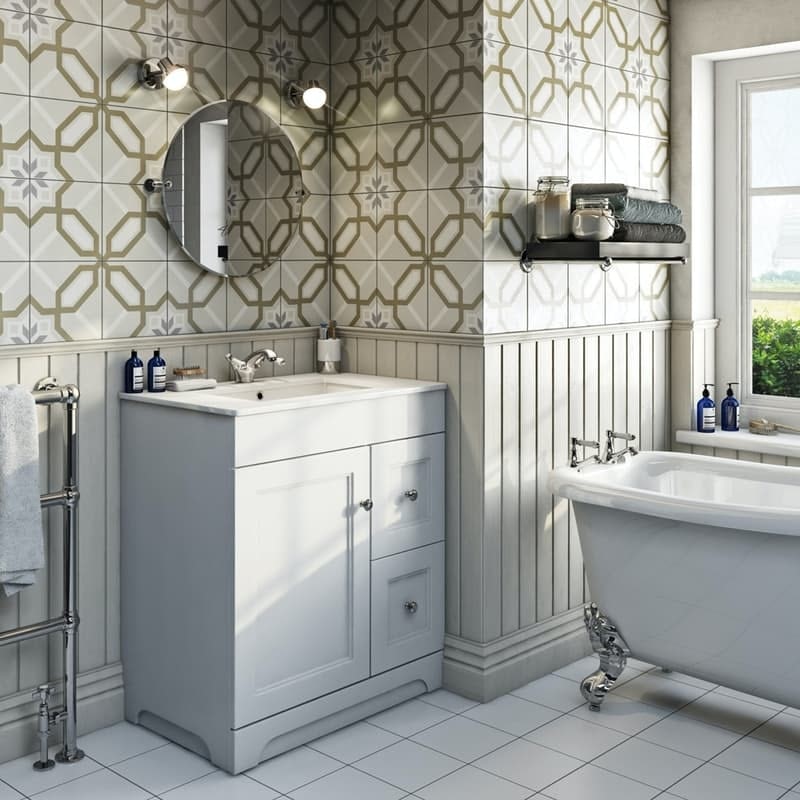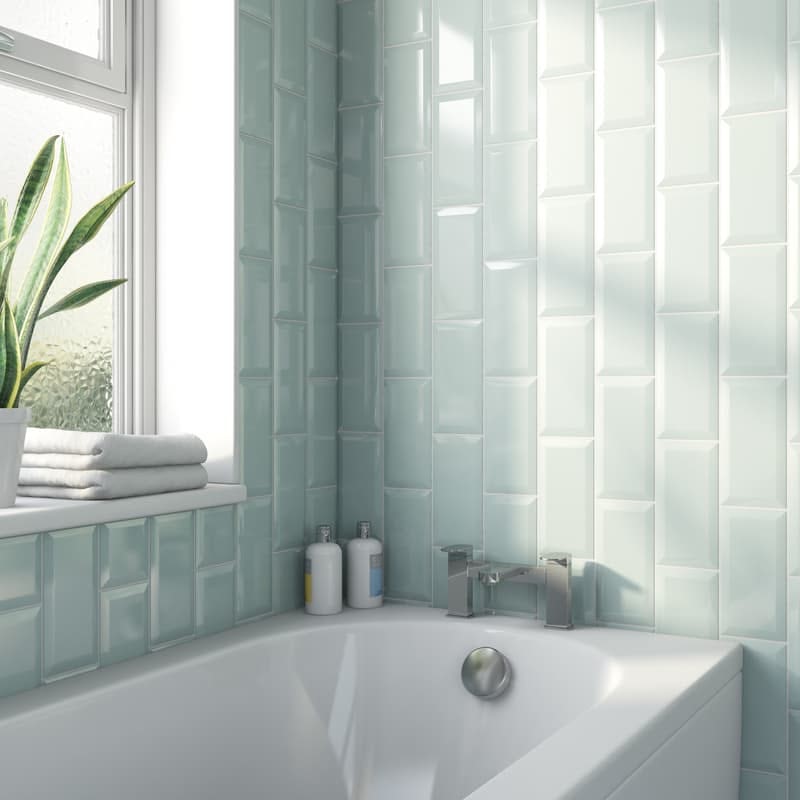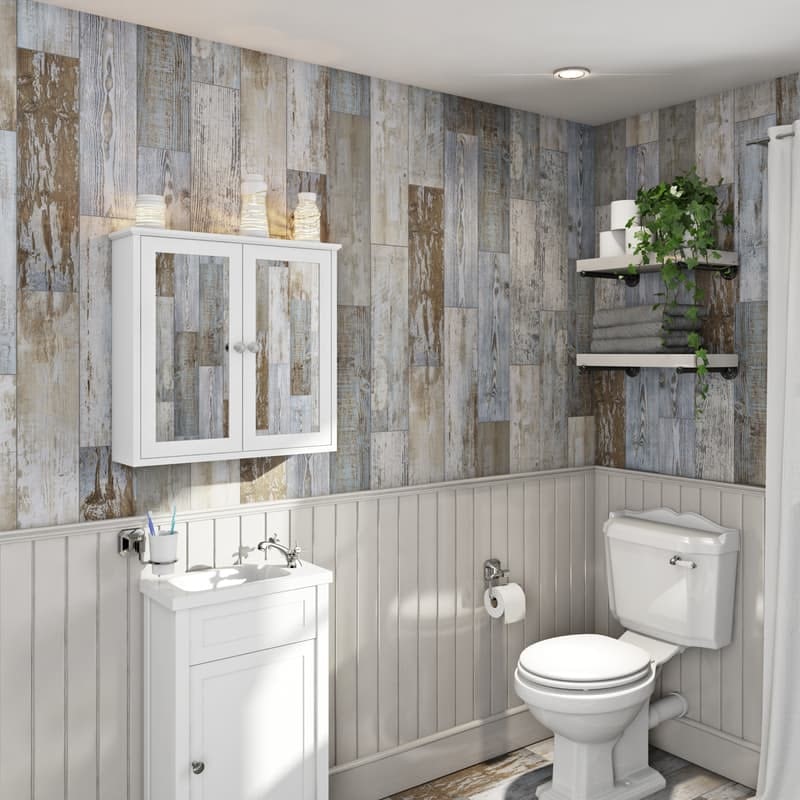Whether you’re employing a professional or doing it yourself, we’ve come up with 4 need to know tips for tiling your bathroom.
Tiles have long been the wall and floor covering of choice when it comes to the bathroom and kitchen. And there’s a good reason for this. They are hygienic, easy to clean and very pleasing on the eye. If they were good enough for the Romans, then they are certainly good enough for us.
What’s more, tiling, when done well, can add value to your home, so it’s important to get the job done correctly. If you’re thinking of having a go yourself or calling in a tradesperson to complete the task, here are the top 4 tiling tips you need to know.
What's your budget?
A budget is one of the first things you'll need to decide upon before buying your tiles. If you are on a tight budget, ceramic tiles are a good choice, as they are affordable, durable and look lovely when installed correctly. If you have a little more cash to splash, natural tiles may be the ones for you. They're long-lasting and will transform your bathroom into a luxurious haven.
Use a tile calculator (which can be found on any tile page) to work out how many tiles you'll need—ensuring that you have included an extra 10%, to make up for any tiles you may chip or break (known as “wastage”).
Patterned tiles, like these from the Valencia range, will really make a statement
How big should my tiles be?
The size of the tiles you'll need will be largely determined by the size of your bathroom space—a larger surface area is easier to tile with larger tiles. However, there are no hard and fast rules and, with a little imagination and creativity, you can successfully decorate a small bathroom with large tiles and get a beautiful and very elegant result.
Large tiles can look quite dramatic and striking in smaller bathrooms. This is because larger tiles equal less cuts, giving a cleaner, professional look. However, smaller metro tiles (based on a style of tile you might find in London Underground stations) are becoming ever-more fashionable, but due to their smaller size, they will add time and effort on to your project.
Handy hint: Discover more tips and tricks when choosing tiles for a small bathroom
Before installing your tiles, be sure to measure them, as sizes can vary slightly.
Metro tiles come in a variety of colours and designs. They can also be used in a range of different ways
How should I prepare for tiling?
So you've chosen your tiles and you're ready to transform your bathroom into a work of art. Before you begin the installation process, you need to make sure you waterproof the walls surrounding your shower and bath. It’s fairly obvious, but these are the areas that will come into contact with water the most, so extra precautions are needed.
This procedure is quite simple and there are lots of waterproofing kits available and wall matting products, designed to make this a relatively simple task.
Decide where your fixtures, fittings, ledges and frames will go on your walls. Once you are sure, highlight the areas with a marker. This way, electricians, plumbers and other tradespeople you employ, will have an idea of the places they'll need to avoid when drilling holes for lines.
Drawing out a plan for your tiles is also useful and once you begin tiling, do so from the top to the bottom. You'll get a more even and professional finish, free of superfluous, untidy, cut tiles.
Even modern bathrooms aren’t always uniform in size and shape. You may find the ceiling slopes slightly or one wall may be slightly different in surface area to another, so make sure you measure your bathroom accurately.
How do I choose the right bathroom tiles for the job?
The type of bathroom tiles you select, will depend on your budget, theme and personal taste. You'll also need to think about the areas your tiles will be covering. For example, if you are planning to tile the floor, you'll need bathroom tiles that are durable, textured and marked as suitable for floors.
These days, you will find an excellent range of specialist bathroom floor tiles, including glazed porcelain and travertine (a type of limestone) tiles, as well as ceramic designs. If you wish to be more adventurous, go for wood-effect tiles, giving your floor a distressed and aged look.
If tiling over wood, your floors will feel pleasantly warm underfoot. If, however, you are tiling over cement flooring, it may be worth investing in underfloor heating.
Porcelain bathroom wall tiles are perfect for shower spaces, ceramic tiles are hard-wearing and polished marble mosaic bathroom wall tiles are artistic, elegant and eye-catching.
Like the look of wood, but don't want to deal with the maintenance? Why not try wood effect tiles, like these from the Basswood range, instead?
More tiling tips, help and advice
If you're searching for further tiles and tiling tips, help and advice, you've come to the right place. Either check out our bathroom tiles advice page or click on one of the links below:
- Frequently asked questions about tiles
- How to tile
- Which materials should you choose when tiling your bathroom?
- Ask the experts: Can I tile over old tiles?
- Ask the experts: Should I fit the toilet before or after tiling the floor?
Tile ideas for your bathroom, kitchen and more
For more great tile ideas head to our bathroom tiling ideas page or click on any of the links below:
- Tiles inspiration gallery
- 5 things to consider when choosing your bathroom tiles
- 5 exciting and unusual ways to use tiles in your bathroom
- 6 more bathroom tile ideas that'll capture your imagination
- Small bathroom tile ideas
Shop tiles
Know you know our top tiling tips, perhaps it’s time to choose the perfect tiles for your bathroom? Click on the image below to browse the full and comprehensive range of quality wall and floor tiles available at Victoria Plum.










